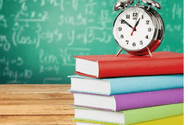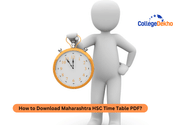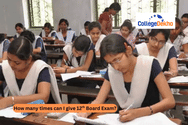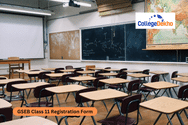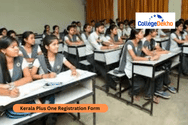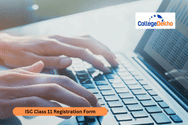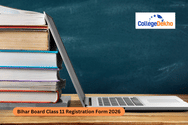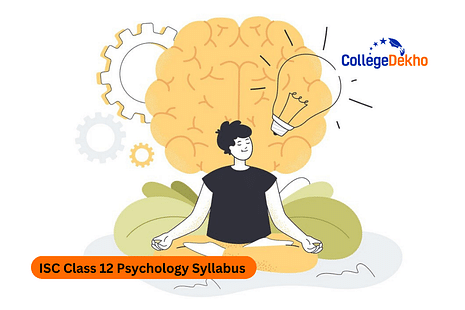

Never Miss an Exam Update
ISC Class 12 Psychology Syllabus 2025-26:
The board has released the Psychology syllabus online. In this subject, students must study eight chapters. These chapters further include multiple topics. There will be a theory and practical exam for students. The theory exam will be worth 70 marks, and the practical exam will be worth 30 marks. The syllabus is designed to provide students the holistic development. The syllabus provides students with the knowledge of various aspects. The board aims to lessen the burden on students and provide them with the required knowledge. Once you complete the syllabus, you can download the
ISC Class 12 Psychology previous year question paper
. Students can go through the article to learn the updated ISC Class 12 Psychology syllabus. According to it, they can prepare the syllabus.
Also Read -
ISC Class 12 Psychology Sample Paper 2025-26
ISC Class 12 Psychology Syllabus 2025-26 PDF
The ISC Class 12 Psychology syllabus 2025-26 PDF is a detailed document that describes the themes and learning outcomes for the Psychology subject in the 12th grade. Check here the ISC Class 12 Psychology 2025-26 PDF .ISC Class 12 Psychology Syllabus 2025-26
There will be two papers on the subject:- Paper I - Theory: - 70 marks
- Paper II - Project Work - 30 marks
Chapter | Sections |
|---|---|
1. Intelligence and Ability | (i) Intelligence: What is meant by intelligence? Theories about its nature? How is intelligence measured? The idea of IQ? Intelligence tests? Individual tests? IQ scales and corresponding traits. Emotional Quotient (EQ) and emotional intelligence. Creativity. Intelligence: David Wechsler's definition of intelligence; what is meant by intelligence and opinions about what intelligence is; Charles Spearman's Two Factor Theory is one of the theories of intelligence. L.L. Thurston's seven elements for primary mental abilities; Raymond Cattell's theories of fluid and crystallized intelligence; and Guilford's model of the structure of intellect. Information Processing, Sternberg's Triarchic Theory, and Howard Gardner's Theory of Multiple Intelligences (eight intelligences). The idea of IQ is a way to gauge intelligence; Individual intelligence tests only define mental age, chronological age, intelligence quotient, and the IQ formula. Group Test for Wechsler-III using Raven's Progressive Matrices. Include test information (goal, background, description, and scoring); IQ levels and corresponding traits (from gifted to below average). Characteristics of Emotionally Intelligent People (in Brief): Emotional Intelligence and Emotional Quotient (EQ). Intelligence and creativity. (ii) Aptitude, Achievement and Interest: meaning of these terms. Reason for their assessment and means of assessment (different tools/ tests) used. |
2. Personality | (i) The definition of personality. Allport's definition of personality. Personality related terms: Temperament, Trait, Disposition, Character, Habit, Values, Concept of self (definitions only). (ii) Theories of Personality: Freud's psychosexual stages of development, Type Theories, Psychoanalytic Theory, and Post-Freudians (in brief); Rogers and Maslow's humanistic theory; Allport and Cattell's trait theory; Bandura's social/behavioral learning theory. Sheldon, Hippocrates, Friedman, etc. Psychoanalytic Theory of Personality: Freud's levels of consciousness, Id, Ego, and Superego personality structures; underlying concepts; psychosexual development and obsession phases; Post-Freudians include Erik Erikson, Horney, Maslow (self actualization), and Rogers and Horney's humanistic views. Traits: Cattell (source and surface traits), Allport (central, secondary, and cardinal attributes). the Costa and McCrae five-factor model. Concepts in each theoretical framework are identified and explained using A. Bandura's Social Cognitive Theory. (ii). Reports, inventories (MMPI), projective techniques like the Rorschach Inkblot Test and Thematic Apperception Test, and behavioral analysis are all ways to evaluate personality. |
3. Lifespan Development | (i) The definition of maturity, growth, and development. Why is it vital to investigate lifetime development? Determinants include the interaction of environment and heredity, as well as the ecological system theory developed by Bronfenbrenner. (ii) Development of the motor, cognitive, and socioemotional systems in infancy. Motor milestone definition; rooting, moro, gripping, and babinski reflexes (simply definitions); motor development. (iii) Childhood - motor, cognitive development, socio-emotional development. Motor development- Gross motor and fine motor skills (definitions only); cognitive development – Piaget’s Theory (Preoperational and Concrete). The emergence of self – gender awareness, gender identity, stability, consistency, stereotype role, sex category, constancy; (iv) Adolescence: some significant problems include physical changes, cognitive growth, and socio-emotional development. physical changes that occur throughout puberty; formal operational stage of Piaget's theory of cognitive development; Socio-emotional development include coming to terms with one's sexual orientation and gender identity. Other key concerns include delinquency, substance misuse (including alcohol and drugs) and eating disorders like bulimia and anorexia, as well as their definitions and symptoms. |
4. Stress and Stress management | (i) Meaning of stress - its basic nature. Stress and strain; psychological, bodily, and environmental types of stress; The stages of GAS, or the General Adaptation Syndrome (Selye's model), stress as a process, stressors (both negative and positive events), the effects of overload, and stress as a result of stress. assessment of stress cognitively, both primary and secondary. (ii) Common causes of stress. External/situational: significant life events, minor inconveniences from day-to-day living, reasons relating to the workplace, and the physical surroundings. Internal/dispositional: Characteristics and forms of personality. (iii) Effects of stress on health and performance. Internal mechanisms and equilibrium are upset, which can lead to immune system issues, hypertension, cardiac issues, ulcers, diabetes, and asthma (to name a few effects). Burnout is a relationship between stress and performance. (iv) Stress management - ineffective and effective strategies of handling stress. Defense mechanisms that are ineffective for dealing with stress include rationalization, projection, reaction creation, regression, suppression relocation, and sublimation; Yoga and relaxation training are good tactics. |
5. Psychological Disorders and Psychotherapy | (i) The biological, psychological, and socio-cultural perspectives on what "abnormal behavior" means. principles for categorizing psychological diseases using DSM IV as a reference. (ii) Some psychological, behavioral, and developmental diseases' traits include: generalized, phobic, and obsessive-compulsive anxiety; Bipolar and depression moods; Antisocial, histrionic, avoidant, dependent, and passive-aggressive personality traits are all causes and symptom. (iii)Schizophrenia - meaning; main types; characteristics. Basic nature of Schizophrenia: symptoms positive and negative. Main types - characteristics of Disorganized, Catatonic and Paranoid Schizophrenia (symptoms). (iv) Behavioural, social rehabilitation, client-centered, and psychoanalytic psychotherapy. What is meant by "psychotherapy" and its key components, including "free association," "dream analysis," "resistance," "transference," and "countertransference" (briefly explain). |
6. Social Thought and Social Behaviour | (i) Social Perception - attribution or the process through which people try to understand the reasons for others’ behaviour. H. Kelley's Attribution Theory (attribution) describes how people decide whether others' behavior is the consequence of internal reasons or external influences. It also discusses biases in making judgments. Each of the following biases, including self-serving bias, the false consensus effect, instinctive vigilance, motivated skepticism, and counterfactual reasoning, should be explained with examples. (ii) Social Influence- how people try to change others’ behaviour; social norms; conformity and obedience - factors affecting them. |
7. Attitudes | (i) Meaning of “Attitude” - the relationship between attitude, perception, belief and behaviour; how attitudes are formed and changed. What attitudes are, what makes up attitudes, how much attitudes influence behavior, how attitudes are formed, and how attitudes change, including persuasion and cognitive dissonance. (ii) Prejudice - the definition of "prejudice" and "discrimination," its causes, and methods for overcoming prejudice. An awareness of what prejudice is and how it manifests itself in discrimination, including its causes—social learning, realistic competition, social categorization, and stereotyping—as well as strategies for overcoming prejudice. |
8. Psychology in relation to the Environment and Social Concerns | (i) The purpose and components of counseling, qualities of a good counselor—authenticity, care for the client, empathy, paraphrasing abilities, attention, listening, speaking, body language, and the influence of culture on listening—as well as the counselor's aptitude for psychological testing. (ii) The impact of the environment on human behavior affects perception, emotion, occupation, way of life, and attitude. Environmental factors caused by people include noise, pollution, crowding, and natural disasters. (iii) Encouraging environmentally friendly behavior through reducing pollution, noise, nonbiodegradable consumer products, plastics, rubbish management, legislation against environmentally unsound development, and tree planting. (ivi) Negative impacts of deprivation and poverty on mental health, social behavior, motivation, and cognitive functions. the main reasons behind poverty. steps taken to combat poverty. |
ISC Class 12 Psychology Syllabus Practical Exam
PAPER II (PRACTICAL WORK) – 30 Marks
Candidates must have finished two of the studies from the list below. Evaluation will be based on a written report that should include the following:(I) Aim
(II) Basic concept: Definition of concepts used and related theory. Identification of variables – independent and dependent.
(III) Method - (i) Sample of the Study
(ii) Procedure followed (data collection, nature of raw data)
(iii) Statistical Treatment of Data
(iv) Results & Discussion
(v) Conclusion
Also Read - ISC 12th Exam Pattern 2025-26
The teacher and a visiting examiner who has been selected locally and received council approval will both evaluate the practical work.
Basic Concept | 3 Marks |
|---|---|
Method (correctness of procedure) | 4 Marks |
Results and discussion | 4 Marks |
Viva | 4 Marks |
ISC Class 12 Psychology Question Paper
- There are 3 sections in the question paper
- Section A includes 14 questions of 1 mark each
- Section B includes short questions of 28 mark in total
- Section C includes long questions of 28 marks in total
- Students will get choices in sections B and C.
ISC Class 12 Psychology Books
- Textbook of Psychology - II by Girishbala Mohanty
- ISC Psychology by By Dr. Papri Chattopadhyay | Chhaya Prakashani
ISC Class 12 Psychology Preparation Tips
Check the following points that are the essential preparation tips for students appearing for the ISC Class 12 Psychology exam.
Highlight the important topics. By highlighting important paragraphs and points, students can easily get back to them later. This makes it easy for them to remember and add these points to the questions.
Note the important questions. After completing the chapters, students should solve the questions and test their knowledge. Make sure you note down all the important points and questions.
Discuss problems with Teachers. If students get stuck, they can discuss the topics with the teachers and clear their doubts. This will help them to remember the topics and use the key points in their answers.
Solve Questions -
Students can focus on solving the questions from sample papers and previous year question papers. This will give them a clear idea about the questions asked in previous years. Through regular practice, students will be able to write better answers.
Also Read -
ISC 12th Preparation Tips 2025-26
Are you feeling lost and unsure about what career path to take after completing 12th standard?
Say goodbye to confusion and hello to a bright future!

FAQs
In the ISC Class 12 Psychology exam 2024-25, students will get very short, short, and long questions. To get proper idea of the types of questions, students can solve the sample papers and previous year question papers.
Students can score more than 95 marks in the ISC Class 12 Psychology Syllabus 2024-25 by regularly practicing to write the answers. This will make it easy for them to write correct answers in the board exams.
To know the important chapters, students can go through the ISC Class 12 Psychology Syllabus 2024-25. They can check the marks allotted to each of the chapters. The chapter with the highest marks is the most important.
Students should focus on ISC Class 12 Psychology Syllabus 2024-25 from day one. They should study the topics as covered in the classroom. This will give them a good understanding of the syllabus.
Students should prepare for the ISC Class 12 Psychology Syllabus 2024-25 by dividing into smaller units. This will make it easy for the students to complete the syllabus in time.
Was this article helpful?








